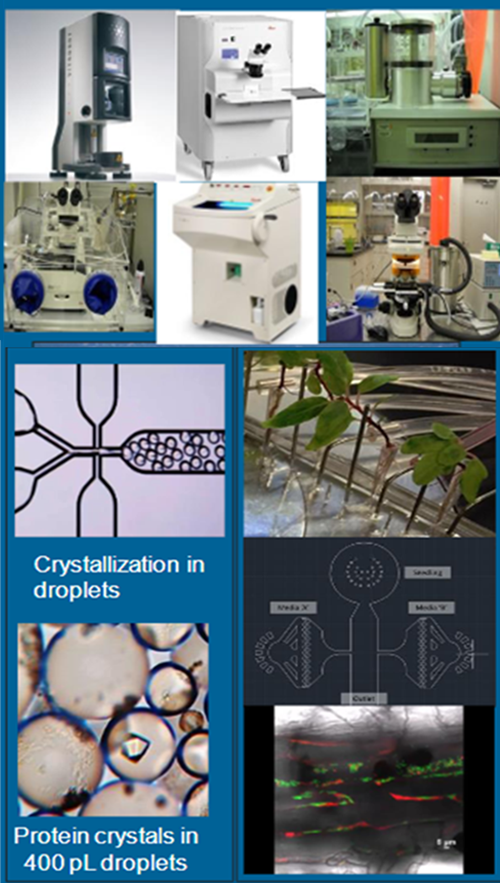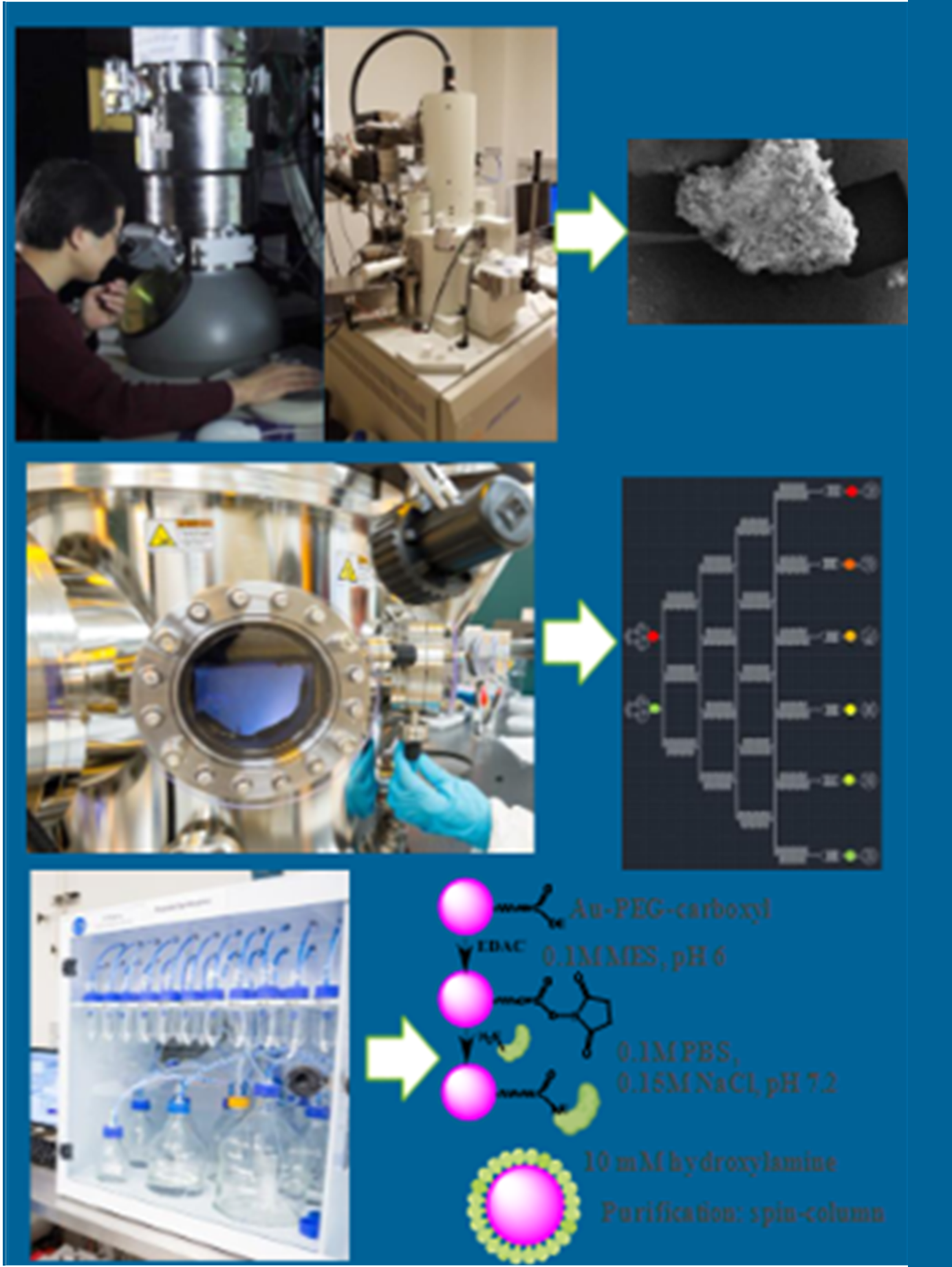eBERlight offers extensive support to various facilities, including the APCF (Sector 84 of APS for sample preparation), ALCF (exascale computing for data processing via Polaris and Aurora), APS cryolab (cryo and thin section sample preparation), MESBPG laboratories (environmental sample preparation), and CNM (electron microscopy, chemical and nanoparticle synthesis, and other tools supporting x-ray-based measurements). These accessible laboratories are equipped with both standard and specialized equipment for chemical and microbiological experiments, including under anaerobic conditions, along with sample storage space. APS resources require an approved Experimental Safety Assessment Form (ESAF) prior to access.
Advanced Protein Characterization Facility (APCF)
The APCF is a state-of-the-art laboratory that hosts high throughput methods (HTP) and a structural biology pipeline that is composed of highly integrated core-technology units that include bioinformatics, proteomics, robotic gene cloning, protein expression, purification, characterization, crystallization, and structure determination. APCF scientists and technical experts work closely with researchers to design experiments, provide training, and offer expertise in data analysis. Request access to the APCF by submitting an ESAF to Sector 84.
APS Cryolab
The APS cryolab provides a variety of services, such as designing, developing, and testing cryogenic systems and components, as well as providing support and training for researchers and engineers. The facility is equipped with state-of-the-art cryogenic equipment, such as helium liquefiers, cryostats, and vacuum chambers, which are used to cryogenic preparation and evaluation of biological samples: from bacteria, algae, and cultured mammalian cells to mammalian tissues and organs.
Molecular Environmental Science and Biogeochemical Process Group (MESBPG) and Ecosystem Biogeochemistry Group (EBG)
These groups are dedicated to studying the fundamental processes that govern the behavior of biological and geochemical systems, including the interactions between living organisms and their environment.
The MESBPG facility is equipped with advanced instruments and techniques for studying the molecular and chemical processes that occur in these systems. Researchers at the MESBPG use techniques such as mass spectrometry, nuclear magnetic resonance spectroscopy, and x-ray crystallography to identify and analyze the chemical compounds involved in biogeochemical processes. They also use molecular biology techniques to study the genetic and biochemical mechanisms that underlie these processes.
The EBG focuses on biogeochemical processes that occur in terrestrial and aquatic ecosystems. EBG use a variety of techniques, such as flux towers, eddy covariance, and isotope labeling, to measure the rates of carbon and nutrient cycling in these ecosystems. With two walk-in freezer rooms (10 ft x 10 ft/each), there is ample room available for storage and the handling/processing of soils in a frozen state (-20°C). Both rooms are equipped with internal electrical outlets and extra overhead LED to accommodate sample preparation.


Additional Resources
Center for Nanoscale Materials (CNM)
The CNM is a premier research and user facility that provides tools and infrastructure for nanoscience and nanotechnology research. CNM offers more than 150 in-house tools and capabilities designed to enhance the study and creation of nanomaterials. The user community can expect the use of focused ion beam (FIB), scanning electron microscopy (SEM), Raman spectroscopy and protein functionalization tools.
Argonne Leadership Computing Facility (ALCF)
The ALCF, managed by the Computing, Environment, and Life Sciences directorate (CELS), provides the most powerful supercomputers in the world for open scientific research. ALCF resources include leadership-class exascale supercomputers, visualization clusters, advanced data storage systems, high-performance networking capabilities, and a wide variety of software tools and services to help facility users achieve their science goals. The co-location of eBERlight and ALCF provides an unprecedented opportunity for collaboration.
The Biological and Environmental Research (BER). Program supports 10 structural biology and imaging resources available to the scientific community advancing research in scientific discovery, innovation, energy security, and environmental responsibility.
The eBERlight LIMS resource provides metadata for eBERlight collaborators.
